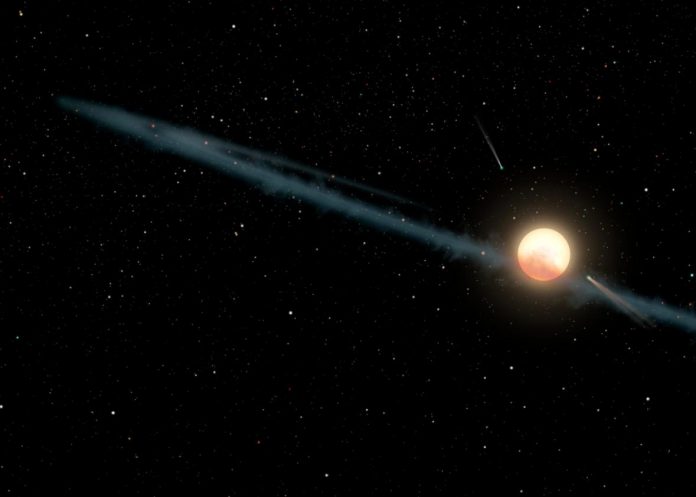After two years of intensive observations and sometimes wild theories, astronomers are confident in saying that the secret of Tabby’s star’s mysterious dips in light is not due to alien megastructures.
The story of the star began sometime in 2015, when a mysterious Kepler catalog star, KIC 8462852, showed a startling 20 percent dip in its light emissions when something passed in front of it. That amount of dimming was far too large to be caused by a planet, which could only produce about a one percent dip in light for a star of that size.
Puzzled astronomers imagined every possible scenario to explain the strange observations, and most came to the conclusion that the interference was probably due to comets. However, some scientists thought maybe, just maybe, we were seeing the infrastructure of an advanced alien civilization surrounding and orbiting the star.
It was the idea of last resort. The star became known as Tabby’s Star, a nickname for astronomer Tabetha Boyajian who spearheaded the idea. But new work from Boyajian’s team has ruled out the alien megastructure idea. In a paper published in Astrophysical Journal Letters, Boyajian, along with Penn State University professor Jason Wright and 200 collaborators, have put to rest the more fantastic possibilities. The dimming of Tabby’s star is caused by a giant cloud of dust.
The work has been done in a fairly transparent way, with updates posted on the site Where’s the Flux. They were waiting for a less common 20 percent dip in light, rather than the one to four percent periodic events that would blip up at semi-regular intervals.
Then, the big dip returned, and the astronomers used the Las Cumbres Observatory to peer into the light signatures as it moved.
“We were hoping that once we finally caught a dip happening in real time we could see if the dips were the same depth at all wavelengths,” Wright said in a press release. “If they were nearly the same, this would suggest that the cause was something opaque, like an orbiting disk, planet, or star, or even large structures in space.”
That didn’t happen. Scattered dust appeared in various wavelengths. “The new data shows that different colors of light are being blocked at different intensities,” Boyajian said in the same press release. “Therefore, whatever is passing between us and the star is not opaque, as would be expected from a planet or alien megastructure.”
The dust idea isn’t new, with several avenues of research pointing to the conclusion. The latest paper, if anything, is the original team finally ready to tentatively go with the first, more realistic explanation.
The data is consistent with the idea that the dust is comets—though that’s far from conclusive. It seems that megastructures are out of the running for good, though astronomers are still eager to learn more about this star, a first-of-its-kind astronomical phenomenon.
It’s not aliens, but Tabby’s Star remains a puzzle to astronomers.
















Wow that is cool